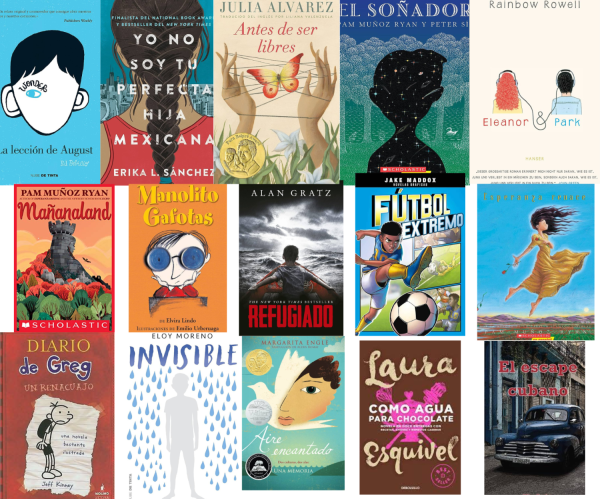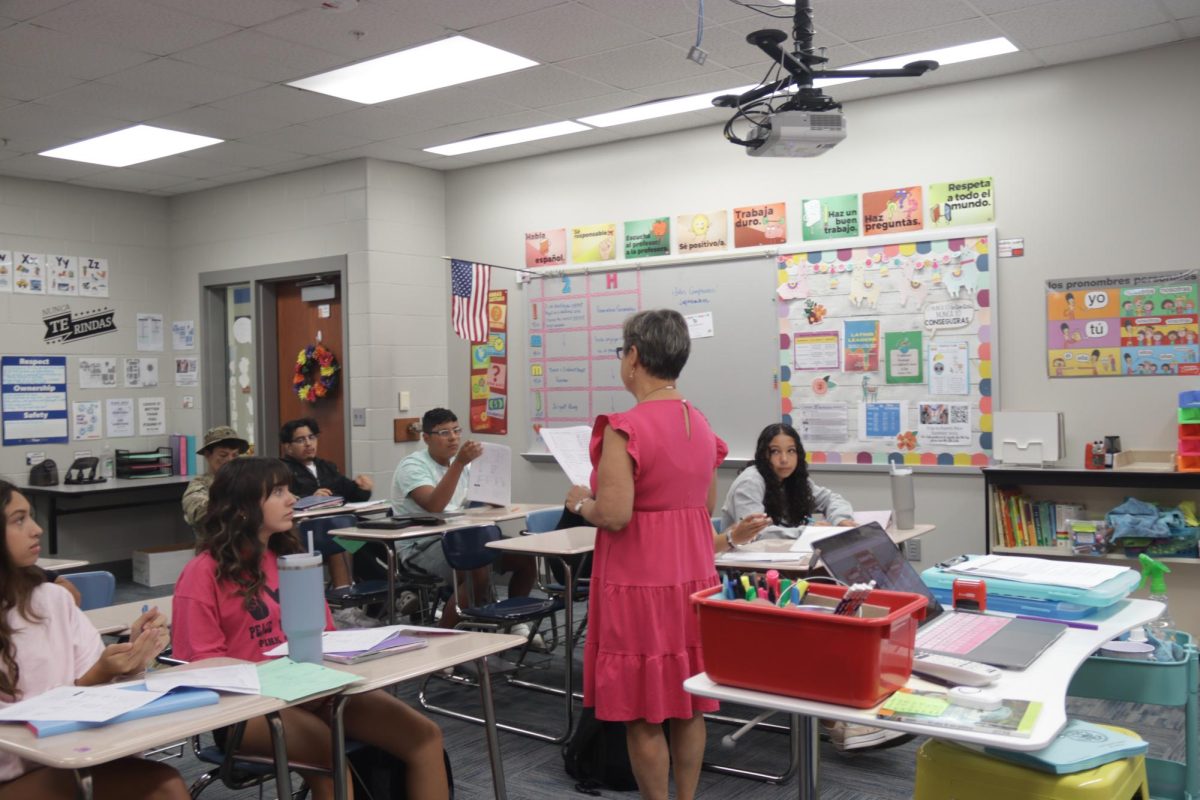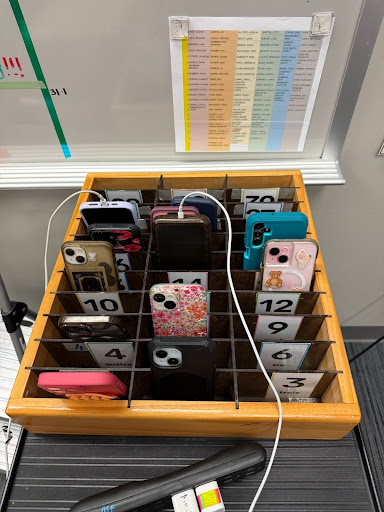Native Spanish speakers have a new class and expanded reading options at Papio South this year.
With the introduction of Spanish for Spanish Speakers, teacher Jean Porrata felt Spanish-language novels would expand students’ learning beyond the classroom.
“One of the things we want our students to do is improve their vocabulary and their grammar, and I personally think that the best way to do that is to be reading authentic books – books that were written in Spanish,” Porrata said.
Seventeen new Spanish-language novels arrived in the Titan library with help from the school’s librarian, Dr. Cynthia Stogdill.
“We encourage kids to read independently in English, and that expands their experience and their knowledge,” Stogdill said. “So, if you’re studying a foreign language, it’s just another layer of learning – to read and embed yourself in their literature. It’s a great opportunity to experience the language in a different way.”
Freshman Sherlyn Ramirez, a student in the Spanish Speakers class, said, “It’s benefited me personally, because I can speak better Spanish, understand words more. I’ve improved my pronunciation, and I can speak more fluently with my family members from Mexico when I visit.”
Another freshman student in the class, Evelyn Benitez, said, “Growing up, I would mix English and Spanish in sentences. So this caused for me to only learn certain things in Spanish. Now when I see certain concepts or words, I only understand them in Spanish. So reading them in Spanish allows for me to get that certain context that I wouldn’t have gotten reading it in English.”
Beyond furthering their understanding of the Spanish language, some of the new books expose Hispanic students to cultural perspectives and experiences they otherwise wouldn’t find in many English-language books.

“They can identify with the characters and go: ‘Oh that’s just like my mom’, ‘Oh that dish they ate is something we eat at my home,’” Porrata said.
That cultural connection is an important aspect of a class composed of students from a variety of different Spanish-speaking regions, including Puerto Rico, Venezuela, Nicaragua, and Mexico, providing them with an atmosphere unlike any other Spanish class found at the school.
“When I was in a class with non-native Spanish speakers, I felt very different from them – almost like there was a barrier keeping me from being able to relate with them,” Benitez said. “However, now being in a class with people just like me, I feel a lot more secure and I’m able to relate with the people around me in ways that I thought I never could.”
Kevin Garcia Guzmán, a junior in the class, agreed that it was different being in a room full of native speakers.
“I feel more comfortable knowing l can talk to them in Spanish. Having the feeling of not being the only one who’s Latino and learning about their culture is exciting,” Guzmán said.
Guzmán said it was interesting to learn about regional differences in the language.
“It … gives us an opportunity to learn how other native speakers from other Latino countries say different phrases or words,” he said.
Spanish for Spanish Speakers’ curriculum is also taught at a faster pace than the other Spanish classes, Porrata said.
“In the past, we usually put them in a regular Spanish 1 class: They’re learning how to say pencil, or, you know, door or table. They already know that. They are basically being held back when they could be pushed forward in their abilities and their Spanish fluency,” Porrata said. “This class allows them to go at a more in-depth.”
“We do it much faster because a lot of those things are intuitive to them,” she explained.
Ramirez said she liked the pacing in the new class.
“The atmosphere with native speakers is a different but better learning environment, because we can move a little faster from subject to subject, and I feel it gives us all a better chance to improve our speaking skills,” Ramirez said.
The library’s new Spanish-language novels enhance that fast-paced learning environment with the opportunity for recreational reading.
“It was really exciting to me that we got to contribute to something that was a new class,” Stogdill said, “and for kids to have the opportunity to read either a popular novel in Spanish or something that was more culturally relevant to Spanish language.”
In addition to the titles Porrata requested for the Spanish Speakers class, Stogdill said she was able to find several mainstream books translated into Spanish, expanding the options for others looking to practice their Spanish skills, such as AP Spanish students.
“I added a couple of those [mainstream books] so that, if a student had read a book in English that was popular, they could read it in Spanish and kind of get that experience in another language,” Stogdill said.
Students in the Spanish for Spanish Speakers class have already checked out some of these books.
“The Spanish-language book I chose was ‘Las Cinco Personas Que Encontrarás en El Cielo’…. I liked this book a lot and it shows, because I don’t usually read,” Guzmán said, “but this book got my attention from the start. And I catch myself reading in my free time.”


![Pictured above is a structure that displays the names of Nebraska Vietnam veterans in order to “honor [their] courage, sacrifice and devotion to duty and country.”](https://plsouthsidescroll.com/wp-content/uploads/2025/10/Trey_092625_0014-e1760030641144-1200x490.jpg)
























